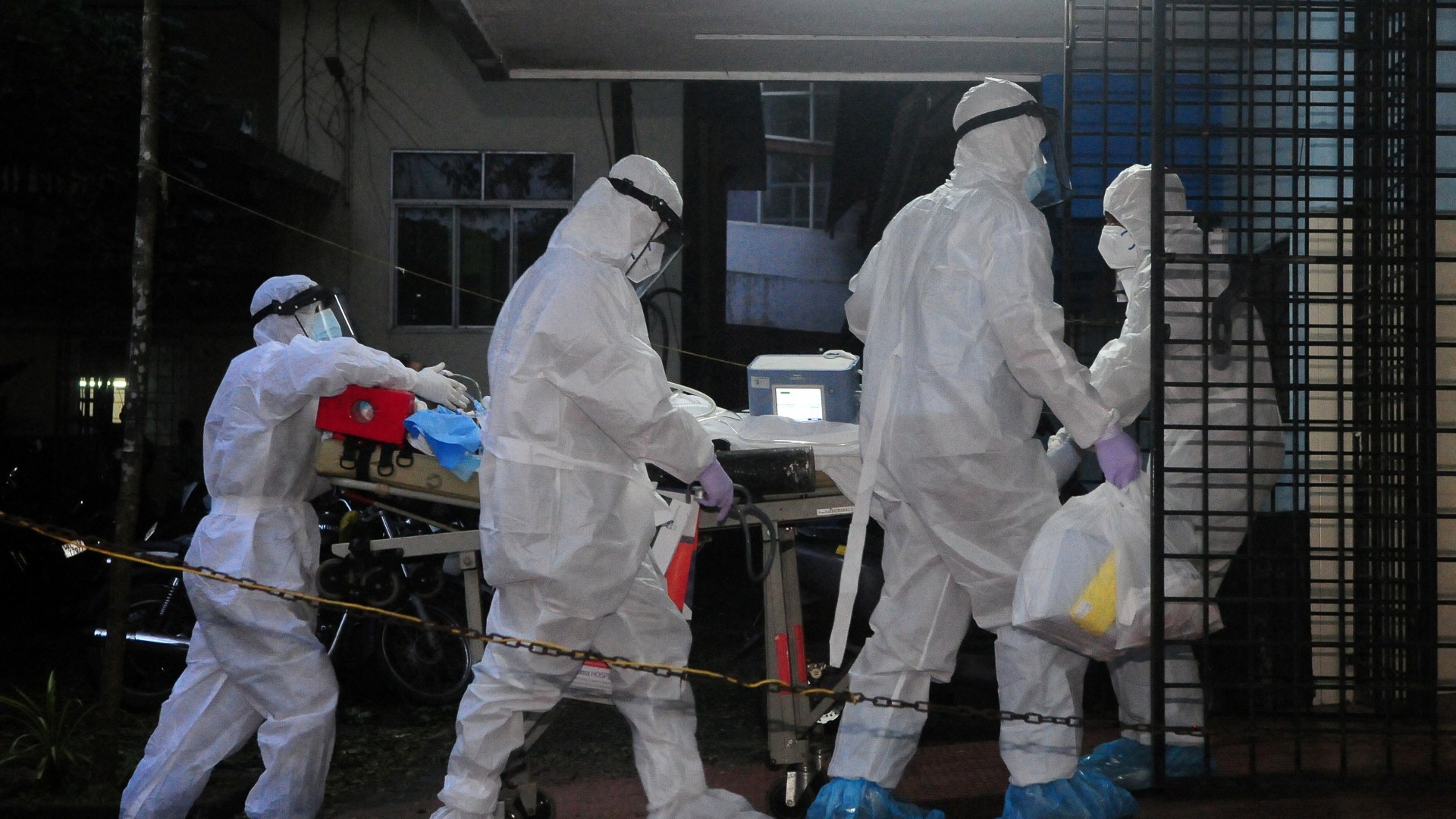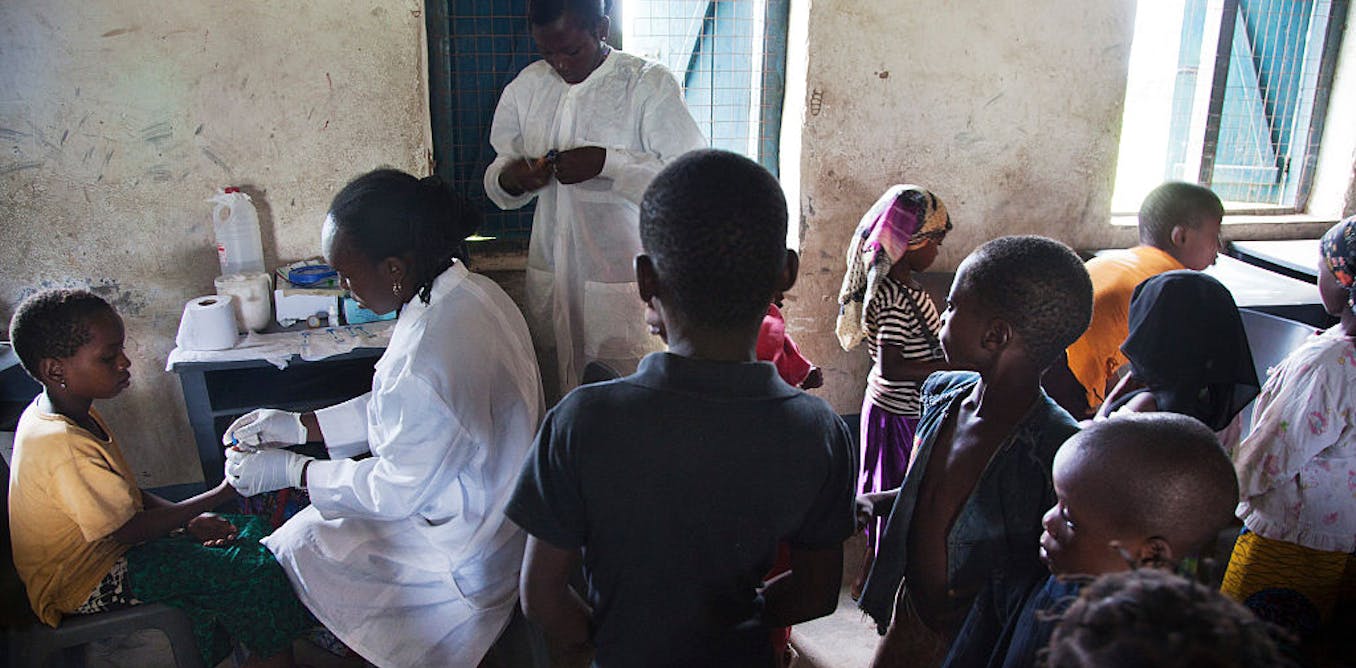THE death of a young man from a ‘brain-swelling’ bat bug has triggered a widespread shutdown of schools and public spaces.
The 24-year-old student tested positive for Nipah virus, an extremely contagious disease that is thought to kill more than half of those infected.
4

4
He died in Kerala, South India, earlier this month, becoming the second person in the area to succumb to the disease in recent months.
Just six miles away, a 14-year-old boy tragically passed away in June after contracting the infection
More than 200 potential contacts have been traced and quarantined by officials racing to stop a deadly outbreak.
According to Indian publication The Hindu, certain schools and universities have shut or are enforcing mask-wearing after the resurgence in Nipah cases.
This has been partially spurred by reports that the infected student travelled to four hospitals while seeking treatment, leaving a trail of 267 potential contacts.
The student first came down with a fever on September 4 and died just five days later, Dr R Renuka, a district medical officer in the town of Malappuram in northern Kerala, told Reuters.
A blood sample was sent to the National Institute of Virology in Pune, which confirmed that the 24-year-old had succumbed to a Nipah infection.
Nipah is a zoonotic virus, which means it can be transmitted from animals – typically bats and pigs – to humans via direct contact with bodily fluids like blood or saliva.
People can also pick the disease up by eating contaminated foods or through close contact with people who already have it, however, these are rarer forms of transmission.
Listed by the World Health Organisation (WHO) as a “priority pathogen” with pandemic potential, it can rapidly attack the respiratory and central nervous systems.
The virus is predominantly seen in Bangladesh, where outbreaks occur almost every year – and was first spotted in Kerala in 2018.
Since it’s been linked to dozens of deaths in the state.
There have never been any reported cases in the UK.
In a statement on Saturday, Kerala’s Health Ministry reassured the public on Saturday that the vast majority had tested negative.
“As of September 21, 74 test results have returned negative so far,” they said, according to ANI News.

4

4
The bug – which inspired the blockbuster film Contagion about a global pandemic – has a fatality rate up to 75 per cent.
Of those who survive it, around 20 per cent are left with long-term neurological conditions, including personality changes or seizure disorders.
For comparison, estimates based on the Johns Hopkins University dashboard suggest the fatality rate of Covid is just over one per cent.
Worried about its potential
Scientists previously told The Sun that Nipah could “absolutely be the cause of a new pandemic”.
Dr Rebecca Dutch, chair of the University of Kentucky’s department of Molecular and Cellular Biochemistry and a world a leader in the study of viruses, told us that Nipah outbreaks occur periodically and it is “extremely likely” we will see more.
She said: “Nipah is one of the viruses that could absolutely be the cause of a new pandemic. Several things about Nipah are very concerning.
“Many other viruses in that family (like measles) transmit well between people, so there is concern that a Nipah variant with increased transmission could arise.
“The mortality rate for this virus is between 45 per cent and 75 per cent depending on the outbreak – so this is much higher than Covid-19. Nipah has been shown to be transmitted through food, as well as via contact with human or animal excretions.
“The incubation period for Nipah can be quite long, and it can be unclear if transmission can occur during this time.”
Dr Jonathan Epstein, vice president for science and outreach at the EcoHealth Alliance, explained how they are tracking the Nipah virus and are worried about its potential.
“We know very little about the genetic variety of Nipah-related viruses in bats, and what we don’t want to happen is for a strain to emerge that is more transmissible among people,” he said.
EXPERT ANALYSIS: Is Nipah virus threat to the UK?
By: Paul Hunter, professor of medicine at the University of East Anglia
Nipah virus is a nasty disease.
Although everything is possible in the world of infectious diseases. The threat of a global Nipah virus pandemic is not high on the list of the things that keep we awake at night.
Firstly, the primary host species are Pteropodidae bats, fruit bats or a flying fox.
Humans usually catch the infection from an infected animal, either the fruit bats themselves or from intermediate animals such as pigs, Contaminated food can also be a cause.
The pigs catch the infection from the fruit bats. Pteropodidae bats are not found in Europe -see figure below.
Secondly, person to person transmission does occur but it is not very efficient.
The R-value is below 1.0, around 0.33, so you would not get sustained person-to-person transmission unless there was some pretty impressive evolution, not impossible but very unlikely.
I guess there could be a risk of introduction into the UK from contaminated food, probably meat illegally brought into the country.
However, any subsequent illnesses would not spread far.
Of course with climate change the distribution of species may change over the next century and who knows what the risk may be in 50 or 100 years from now.
‘Ideal conditions’
The US deems the virus a Category C bioterrorism threat, as it “could be engineered for mass dissemination in the future”.
There is no medication or vaccine available to treat or prevent Nipah.
Parts of Kerala are said to be the most at-risk globally for the virus.
An investigation published by Reuters last year, found that Kerala, which is a tropical state and is witnessing rapid urbanisation and tree loss, created “ideal conditions for a virus like Nipah to emerge”.
Experts say that due to habitat loss, animals are living in closer proximity to humans and this helps the virus jump from animals to humans.
The state government recently announced that it was creating an action plan to prevent a Nipah outbreak.
Last year, authorities in Kerala state closed schools and offices after confirming five cases.
Everything you need to know about Nipah virus
What’s Nipah virus?
Nipah virus is a zoonotic virus that can cause some serious health issues, including severe respiratory problems and inflammation of the brain (encephalitis).
How does it spread?
It mainly spreads through contact with infected animals or through contaminated food and fluids.
What should you watch for?
Keep an eye out for symptoms like fever, headache, dizziness, respiratory distress and confusion
When do symptoms show up?
Typically, symptoms show up about five to 14 days after exposure.
How do you treat it?
Unfortunately, there’s no specific treatment for Nipah virus, so supportive care is key.
How can you protect yourself?
To keep safe, avoid contact with infected animals, practice good hygiene, and be cautious with food, especially fruits that might be contaminated.




